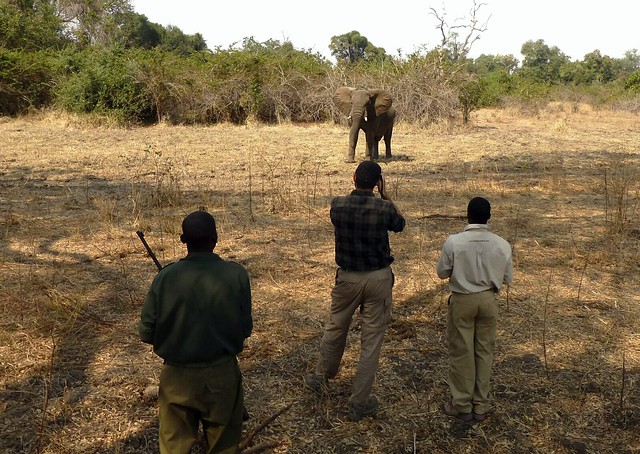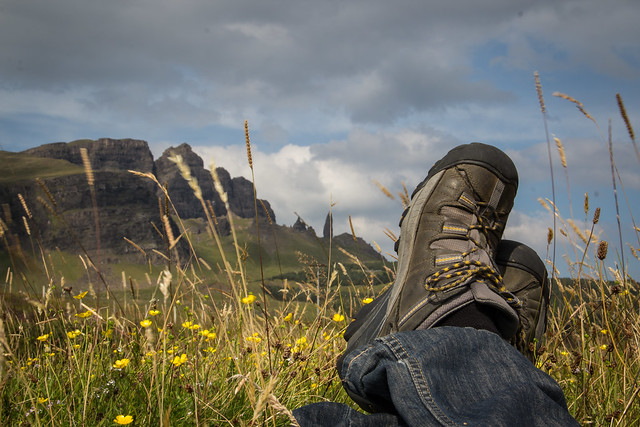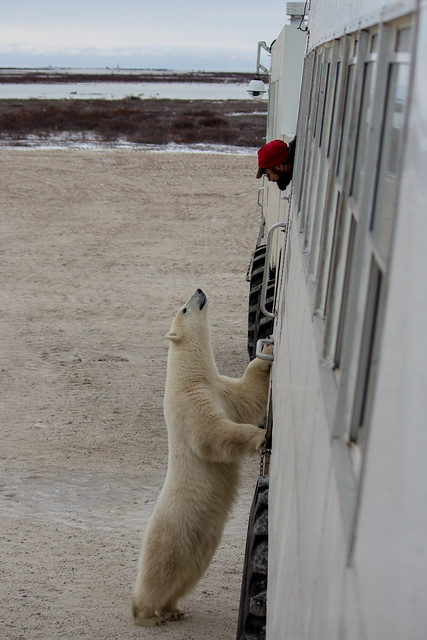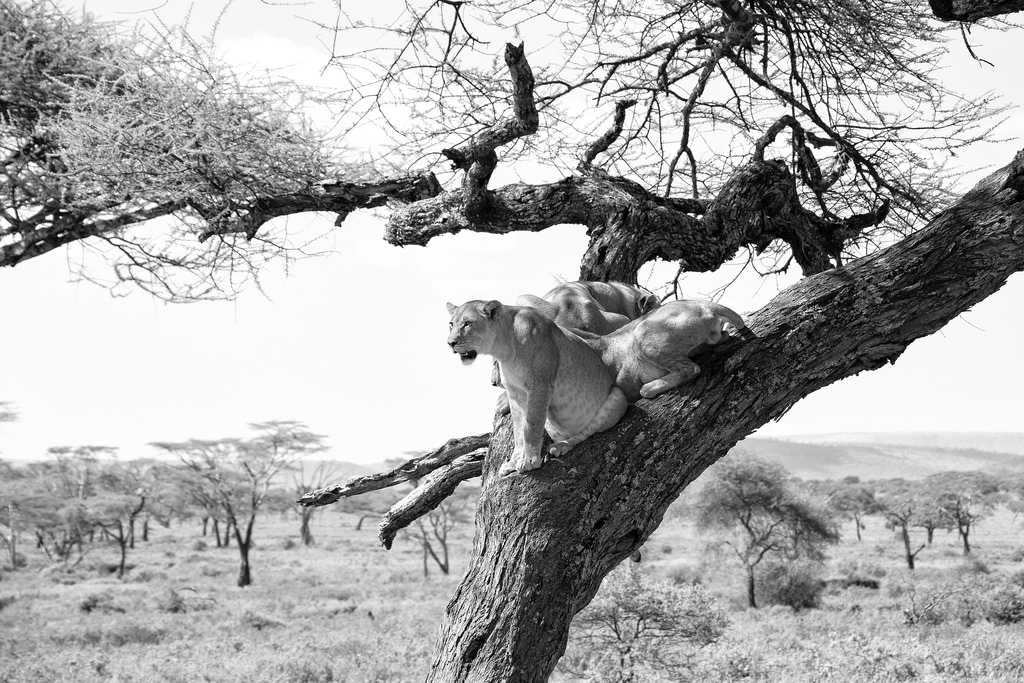Crash Course Advice For Travel Photography
A huge chunk of the travel photos I see on a daily basis are horrible. Not just amateur shots from friends and strangers, but also from semi-professional travel bloggers and established travel brands. It always amazes me how many photos are horribly grainy, low resolution, blurry, crooked or nonsensical.
There’s a reason that people dread that moment when a friend or family member returns from a trip and is eager to share the 3,000 photos they took over the course of their two week vacation. About 10% of the usual photo show is interesting, well-composed, and speaks to the audience. The remaining 90% should have been sorted, filtered, deleted, or saved for personal use. As my friends and loved ones can tell you, I still have issues with this one. We all do. So, don’t view this post as an absolute do/do not, view it as suggestions and guidelines to aspire towards.
 (Photo by Ed Berger)
(Photo by Ed Berger)
Four Types of Travel Photos
First things first. It’s important to understand that you shouldn’t just be shooting one type of photo. Far too often people aim for the “postcard perfect” photo while deleting everything else. Or the “in the moment” type of photo that captures the spirit of the moment.
The reality is, that you should shoot with two to four potential uses in mind.
1. Record Memories – Believe it or not, you can and will forget some of the most amazing and magical moments experienced on a trip unless you document them somehow. For some people writing a journal works. For many of us, we’re visual and taking a photo is a huge help. This means that you should be taking a lot of photos and that many of these photos should be for you and you alone. These are small things like a cafe where you had coffee along a small side street, your first Argentinian steak, or a photo of the random local you swapped stories with in a tiny Irish pub over your first pint of Guinness. For years I either wouldn’t take these shots or I’d delete them as random garbage that didn’t meet the “postcard perfect” standard. I now keep these photos and like to go back through them a few years after returning from my trip. It is amazing the things they bring back to mind. The majority of these photos should be kept private. Outside of particularly flavorful photos, these shots are likely boring to others without the richness that was added by actually having experienced the moment.
2. Postcard Perfect Shots – These are the photos that you will want to share. These are the photos where you composed it beautifully, where the sharpness is excellent, there’s not too much ISO noise and you have a share-friendly image. For every 200-300 photos most of us take, we’ll get 5-10 of these types of photos. These are the shots where all of the photography guidelines and best practices are extremely useful. Things like the rule of thirds, good framing, balance, lighting etc. are all important. There are thousands of how-to guides for improving general photography and I suggest reading at least a couple before taking your trip.
3. People – There are portrait shots and then there are people shots. A good portrait shot falls in the “postcard perfect” category. What I suggest for the third type of travel photography is general people shots. Travel is a social experience. You meet other travelers, you spend time with traveling companions, and even have some great conversations with local folks along the way. Take photos of those people. Even better if those photos capture them being natural – relaxing, playing, eating, chatting – you name it. It humanizes the trip and it provides fun photos to document the social side of your experience. It’s also a great way to keep in touch. A few years back I explored the power and value of facebooking travel photos in my post “Personalize Your Travel Photography” and it is more true today than it was in 2009.
4. Utilitarian Photos – As a travel blogger there’s a whole subset of photos that I need to take that will help me visually convey the things I write about. These photos are not works of art by themselves, rather they’re illustrative tools that help enhance a post but are too weak to be shared or consumed on their own. It’s important that I take these photos, edit them and upload them but it is equally important that I don’t confuse these shots as the types of shots I want to showcase and highlight.
Each of these four potential types of photos should be sorted during your post-trip photo editing. Go through and ask yourself where each photo you’ve decided to keep belongs and then sort them into separate folders. Once that’s done, choose how you want to share each one. Remember, for your travel blog or journal you can always pull from the different folders simultaneously. But, I always find the act of having to sort my photos and having to categorize them is incredibly helpful when deciding what I should keep, what I should share, and what I should publish.
The DO and DO-NOTs
DO NOT use digital zoom – All digital zoom does is crop the photo in the camera. It will make your photos grainy and decrease the quality on anything larger than your 3″ camera screen. Have to zoom in? Zoom to the max mechanical zoom your camera has and then take your shot. You can do your own digital zooming in post-editing if absolutely necessary.
DO NOT post crooked photos – The way we hold cameras is awkward. As a result, most of our photos end up being slightly crooked. That’s a natural part of photography. BUT, there’s no excuse for not rotating and cropping your photo before publishing it. It takes 5 seconds and is essential for creating a decent photo. The only exception? When you’re intentionally being really creative and meant to have a crooked horizon or photo. Be honest though, were you being “artistic” or were you just standing on a slight incline?
DO edit your photos in Picasa or Lightroom – There are great photo editing solutions available now that streamline the photo editing process. Picasa (free) is good for absolute amateurs while Lightroom ($75-150) is fantastic and used by most semi/professional photographers. They make processing and work flow MUCH easier and faster.
DO use automatic presets – Not a veteran photographer shooting in RAW and familiar with the details of AV/TV/P/M settings? The modern point-and-shoot camera is really smart. Even the dSLR presets for those who are still learning but not completely comfortable fiddling with things like aperture, white balance, and ISO work well. Shooting fireworks? Use the fireworks setting. Landscapes? Use the landscape setting. Sunset? Definitely. These presets will adjust the colors, exposure, and speed to help take really rich photos. Auto is great, but the scene and auto-presets are even better!
DO NOT keep blurry photos – A blurry photo is blurry. Yes. It REALLY sucks you missed the moment. It doesn’t matter. To everyone else your photo looks like a blurry mess. Would you watch a blurry movie? No. Want to avoid blurry photos? You’re shooting digital. Take multiple photos of particularly memorable or beautiful moments. Never be afraid to delete photos later. Just make sure you are actually willing to delete them.
DO be interesting – When taking photos of people or posing for photos try and be interesting. Be silly, flavorful, active, or engaged. Otherwise you’ll have what looks like a mugshot that’s been photo-shopped in front of a bunch of beautiful places.
DO wait 30 seconds – Take the extra 30 seconds to make sure there aren’t an army of other tourists in your photo. It always amazes me how often people post photos of themselves from their trips and the photo is a close up of them, and a bunch of tourists in the background that detract from your main subject. People will move. Just be willing to wait a few seconds to set up a shot properly.
DO NOT upload low resolution shots – Whatever you upload to the web should be at least 1024 px wide. AT LEAST. Do NOT upload low resolution versions of your shots to the web. Worried about people stealing them? Fine. Upload a medium-resolution shot.
DO NOT over watermark – You’re proud of your photo. You don’t want people to steal it. Fine. If you absolutely must add a water mark, then make it SMALL and SUBTLE. Think of a watermark as an advertisement. Would you go see the Mona Lisa if it had an ad for a website semi-transparently painted across her forehead? No. You’re sharing your photo, so share it. If someone steals it, then you can deal with them on a case-by-case basis.
DO be aware – When framing your photo constantly ask yourself, how much of this is what my eye sees, and how much of this is what the camera can see and capture?
DO buy an extra memory card and batteries – There are few things worse than accidentally deleting photos or not being able to take photos because you’re out of memory. Similarly, even the best photographer in the world can’t take a photo with a dead battery.
Remember – travel photography is a work in progress. Anyone can take amazing shots, some just have to work a little harder at it. I still have a lot to learn, and my photography (and post-processing) is constantly improving. Following the simple suggestions outlined in this post should help you make major advancements in your travel photography without having to get too deep into the technical minutia of advanced photography.
If you’re in the mood to hunt for Lightroom, extra batteries or an SD card – I’m an Amazon affiliate and you can help support this site by clicking this link.



Bravo!! LOVE THIS! Will send a lot of people here – genius advice. Thanks!
Brilliant, great to hear it resonated with you! Thanks for spreading the word!
Solid advice! Hope more people follow it 🙂
BTW Adobe CS2 is now free to download from their website. I have no idea if this is just temporary, but I grabbed copies for mac and pc immediately just in case!
That’s an awesome tip! Thank you!
Great post. Keep it up!
Thanks for reading!
Thanks for this. I still have a lot to learn and am overwhelmed by how much work it is to edit photos. One thing I have trouble with is when the photo is a bit crooked, every time I straighten it in Picasa, it immediately becomes blurry. Also, I usually use lower resolution photos to try to increase page load time, but I will try to start using higher resolution as you suggested.
Strange on the rotation. Does the final photo become blurry, or just the preview? Sometimes the way software previews a photo makes it look blurry during rotation. Otherwise maybe it isn’t cropping and rotating at the same time the way it should be. Most blur comes from when software tries to enlarge a photo, which you usually don’t want. Always go smaller or stay the same if you can.
When uploading it, a smaller display version is definitely important from a loadtime perspective but if you just upload to the exact dimensions for your site then you are limited if you expand your design or change your format further down the road. Though if I was able to do it over, I’d go with SmugMug because of their Domain portaling, I currently host most of my images for the site on flickr, upload them in full resolution, then let the site auto-generate a re-sized version for me to embed.
Some good advice here – I often pack an on Holga (analogue film) camera as a backup – needs no batteries and weighs next to nothing – always a great back up when your camera fails.
Tristan
That’s a really cool idea. Do you then develop the film as digital files?
I’ve gotten so much more patient and better at noticing the random crap in my frame since getting more into photography. Good tips!
haha, yes. Lightpoles and power lines in particular still kill me from time to time!
Fantastic tips, Alex! Definitely sharing this one. Nothing drives me nuts more than albums on Facebook with 300 photos from a weekend trip. Select a few of your best shots and just post those!
Thanks for the share! Glad it resonated. It is definitely difficult, but it makes such a big difference!
Good advice!
Thanks Dan! Glad it helped!
I still keep some photos which are not sharp or way too dark – for memories’ sake if I don’t have another. That I publish one: very very rarely, and only in context of a blog post. My rule in general is that I delete 40-70% of ALL photos from my harddisk, but I also tend to take triple shots of most motifs (which slightly changed settings or angle).
I never fill a memory card as I tend to move my images onto my laptop every few days, sometimes daily. But a spare battery is a must! I recently missed the opportunity for a great video because I had forgotten to recharge my spare battery (actually 2 of them at once!).